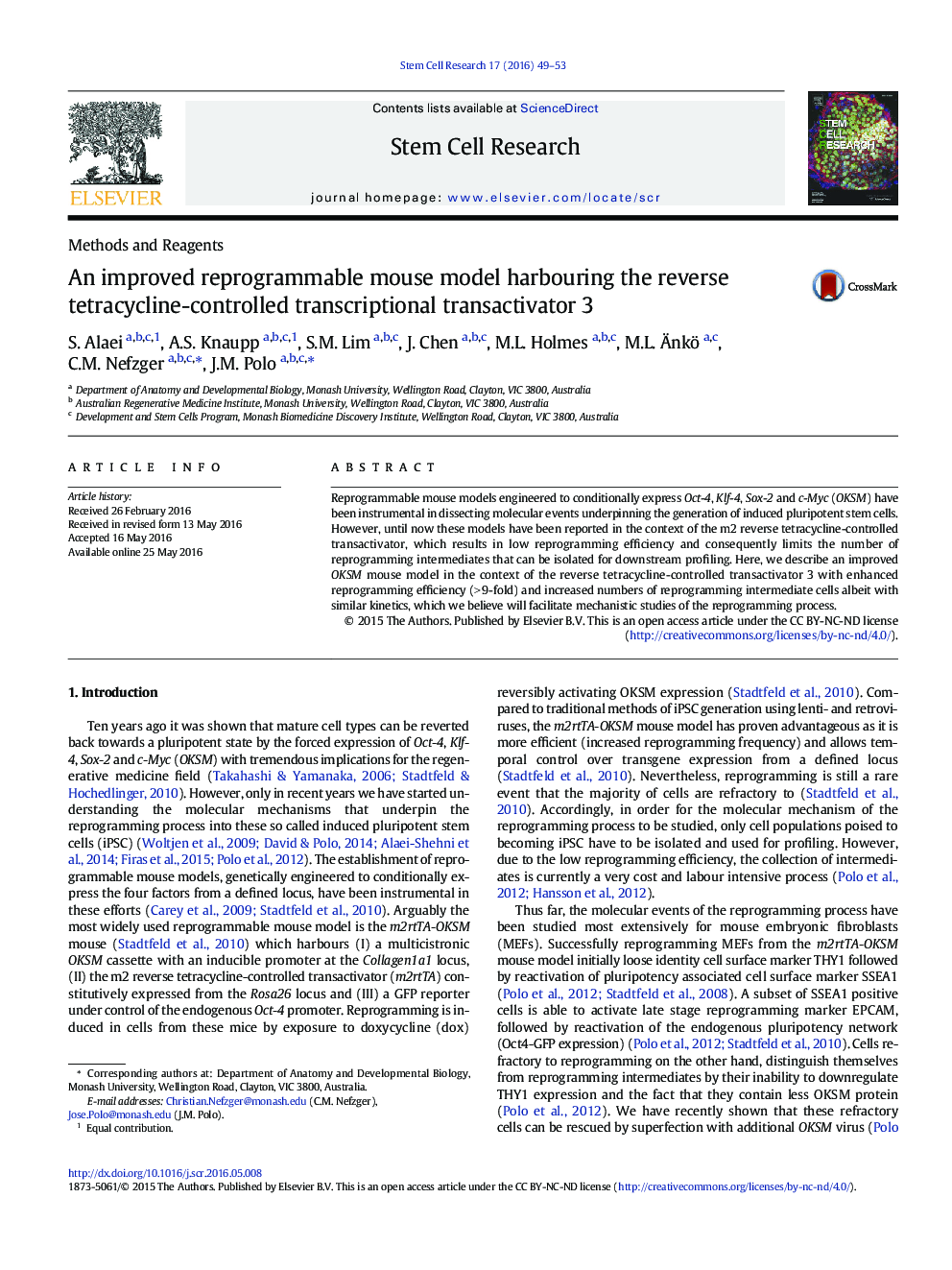| Article ID | Journal | Published Year | Pages | File Type |
|---|---|---|---|---|
| 2094118 | Stem Cell Research | 2016 | 5 Pages |
•Use of rtTA3 in OKSM mouse model facilitates 9-fold higher reprogramming efficiency.•Up to 9-fold more reprogramming intermediates can be isolated.•rtTA3-OKSM reprogramming intermediates have higher protein levels of Oct4 and Sox2.
Reprogrammable mouse models engineered to conditionally express Oct-4, Klf-4, Sox-2 and c-Myc (OKSM) have been instrumental in dissecting molecular events underpinning the generation of induced pluripotent stem cells. However, until now these models have been reported in the context of the m2 reverse tetracycline-controlled transactivator, which results in low reprogramming efficiency and consequently limits the number of reprogramming intermediates that can be isolated for downstream profiling. Here, we describe an improved OKSM mouse model in the context of the reverse tetracycline-controlled transactivator 3 with enhanced reprogramming efficiency (> 9-fold) and increased numbers of reprogramming intermediate cells albeit with similar kinetics, which we believe will facilitate mechanistic studies of the reprogramming process.
